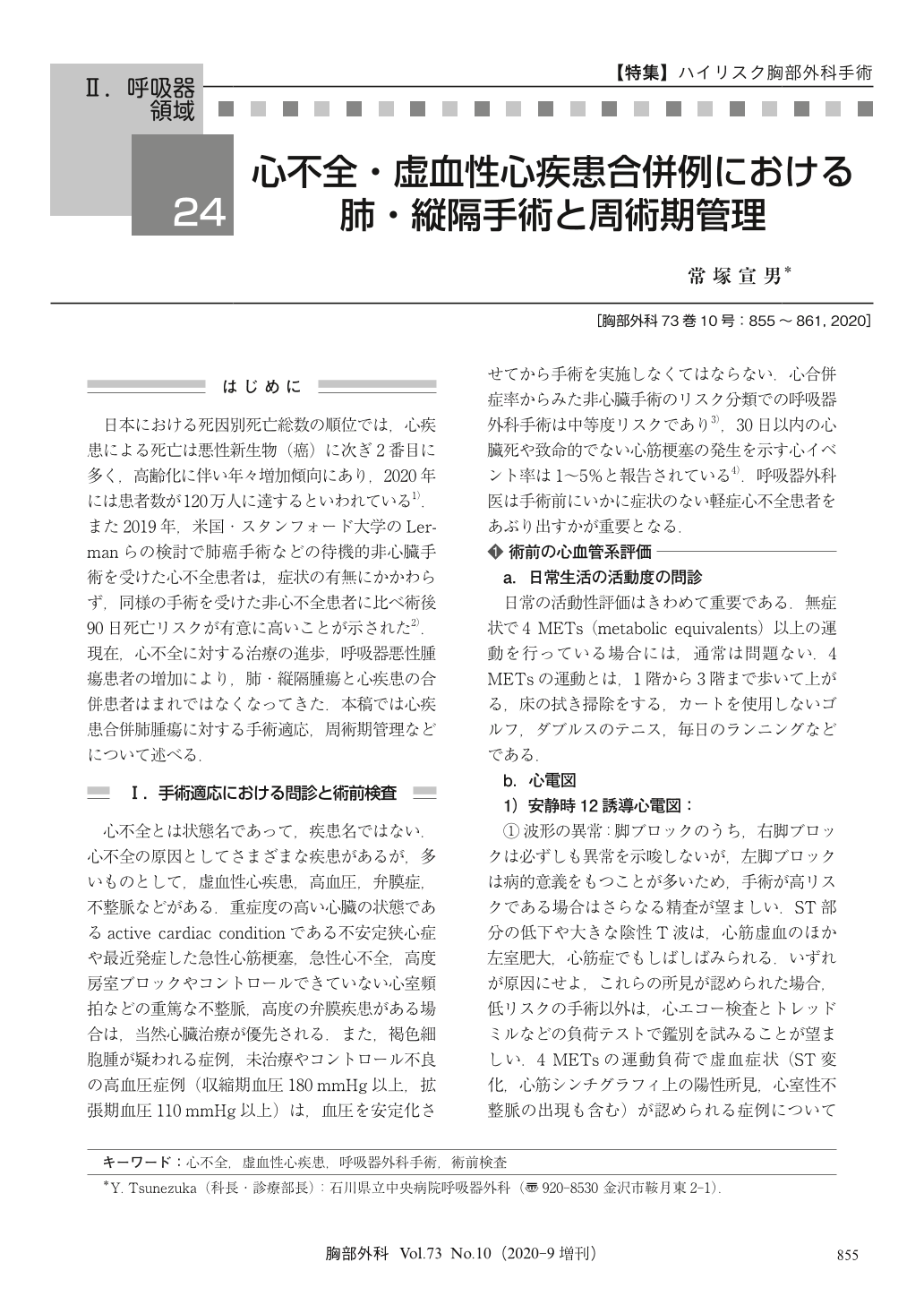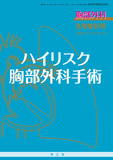Japanese
English
- 有料閲覧
- Abstract 文献概要
- 1ページ目 Look Inside
- 参考文献 Reference
日本における死因別死亡総数の順位では,心疾患による死亡は悪性新生物(癌)に次ぎ2番目に多く,高齢化に伴い年々増加傾向にあり,2020年には患者数が120万人に達するといわれている1).また2019年,米国・スタンフォード大学のLermanらの検討で肺癌手術などの待機的非心臓手術を受けた心不全患者は,症状の有無にかかわらず,同様の手術を受けた非心不全患者に比べ術後90日死亡リスクが有意に高いことが示された2).現在,心不全に対する治療の進歩,呼吸器悪性腫瘍患者の増加により,肺・縦隔腫瘍と心疾患の合併患者はまれではなくなってきた.本稿では心疾患合併肺腫瘍に対する手術適応,周術期管理などについて述べる.
Recent changes in the demographics of surgical candidates, in terms of age, have increased the number of patients with surgical risk factors. In patients with preoperative cardiac diseases such as myocardial ischemia, arrhythmia, or congestive heart failure, it is important to offer any necessary preoperative medical examinations and treatments because postoperative cardiac failure is more of a concern in patients with already abnormal cardiac physiology, undergoing significant lung resection. Thoracic surgeons should be challenged by another conundrum to accurately select the best candidates for surgical treatment. Usually perioperative management of antithrombotic therapy in patients who need general thoracic operations such as lung cancer surgery after coronary artery stent placement or valve replacement have made recommendations, and heparinization is needed for patients with atrial fibrillation for prevention of thrombo-embolism. It is sometimes used in clinical practice as bridging therapy during the period of discontinuation of antiplatelet therapy for patients with cardiac complications after several cardiac surgery. As points to be aware of regarding surgical operations, minimal invasive surgery probably should be performed if possible.

© Nankodo Co., Ltd., 2020


